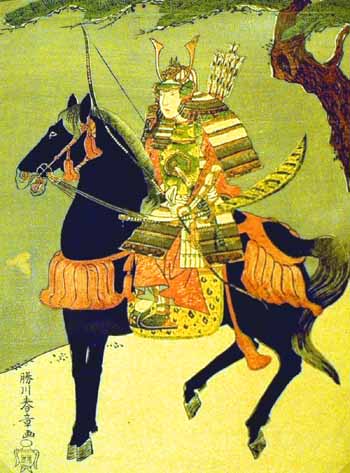
As the Japanese imperial court gradually lost power to military authorities in the countryside, a further distinctive feature of Japanese civilization emerged in the celebration of martial virtues and the warrior class—the samurai—that embodied those values. From the twelfth through the mid-nineteenth century, public life and government in Japan was dominated by the samurai, while their culture and values, known as bushido, expressed the highest ideals of political leadership and of personal conduct. At least in the West, the samurai are perhaps best known for preferring death over dishonor, a posture expressed in seppuku (ritual suicide). But there was much more to bushido than this, for the samurai served not only as warriors but also as bureaucrats—magistrates, land managers, and provincial governors—acting on behalf of their lords (daimyo) or in service to military rulers known as shoguns. Furthermore, although bushido remained a distinctively Japanese cultural expression, it absorbed both Confucian and Buddhist values as well as those of the indigenous Shinto tradition.
The Kojiki is Japan’s oldest extant book. Written in 721, it contains passages about Yamato Takeru, the son of the Emperor Keiko. It provides an indication of early Japanese military values and literary self-image, including references to the use and admiration of the sword by Japanese warriors.
This early concept is further found in the Shoku Nihongi, an early history of Japan written in 797. The chapter covering the year 721 is notable for an early use of the term “bushi” and a reference to the educated warrior-poet ideal. The Chinese term bushi had entered the Japanese vocabulary with the general introduction of Chinese literature, supplementing the indigenous terms tsuwamono and mononofu. It is also the usage for public placement exams.
An early reference to saburau—a verb meaning to wait upon or to accompany a person of high rank—appears in Kokin Wakashū, the first imperial anthology of poems published in the early 10th century. By the end of the 12th century, saburai (“retainer”) had become largely synonymous with bushi, and closely associated with the middle and upper echelons of the warrior class.
Although many of the early literary works of Japan contain the image of the warrior, the term “bushidō” does not appear in early texts like the Kojiki. Warrior ideals and conduct may be illustrated, but the term did not appear in text until the Tokugawa period (1600-1868).